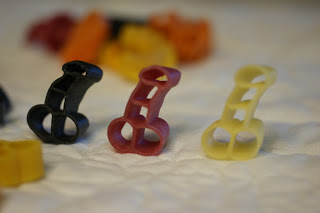Northern stereotypes
(at least Micahel Palin is an actual Yorkshireman)
Whippets, cloth caps and coronary heart disease, but we do talk to people on buses and don't wear coats in the depths of winter. We Northerners have had to put up with all sorts of lazy stereotypes. I mean, don't get me wrong, at least we're not Scottish, but, as far as England goes, we get the shitty end of the stick most of the time. Shat upon by the London-centric ruling elite through under-resourced transport and other infrastructure and the arts, we are the former industrial heart of the country given lip service in the modern, service-industry UK. The current government has set up the "Northern Powerhouse" initiative to promote the north of England. It is, of course, a load of hollow-sounding bollocks, in the light of the disparity in funding for transport for London being £708 per capita compared to £289 in the north of England. All that money so people in London can continue to avoid eye-contact with their fellow commuters on better, more frequent trains. Like I say, lip service.
All the same we are fiercely proud of our identity, though. Geordies, Yorkshiremen, Scousers, Mancs, people have a pride of where they are from. A component of this is culinary heritage. Pies are a big thing across the North, especially in the capital of all that is pastry-encased, Wigan. Fish and chips is another, saveloys in the Northeast. Don't even get me started on the regional variation of names for bread rolls. That just boggles the fucking mind. Go into a bakers in any Northern town and ask for a bread bun by the local name and there's no problem. Wander a mile down the road and you ask for a bread roll by the same name and they look at you like you're just regaining the power of speech after suffering a stroke.
One local delicacy that is synonymous with the part of the North is Lancashire hotpot. Basically this is a lamb stew topped with sliced potato, so the potatoes become crispy. It's shepherd's pie for lazy people who can't be arsed to mash their potato.
I don't know why I chose to call this recipe a hotpot as it has fuck all to do with Lancashire hotpot, other than it's got potatoes in it, but the name seems to fit. Like most of my recipes, it's quite spicy hot and made in a pot. It's another meat-free Monday recipe (it's actually vegan, in fact) that I fancied flinging together with beans to give it a bit of extra protein. It's very substantial and tastes great, very much a comfort food type of dish. I've written the recipe for the hob, but I actually made this in a slow cooker, so I've included a timing for doing it by that method.
TIMING
Preparation: 15 minutes
Cooking: 1½ hours on the hob, 6 hours in the slow cooker
INGREDIENTS
2 tbsp olive oil
1 small onion, chopped
2 cloves of garlic, crushed
200g mushrooms, chopped
1 large courgette, topped, tailed and sliced
2-3 small potatoes, peeled and cut into 2cm pieces
4 medium fresh tomatoes, peeled and chopped
1 tin mixed beans (the one I used said it was 290g)
½ tsp dried mixed herbs
½ tsp smoked paprika
Pinch chilli flakes
Good dash of Tabasco sauce
1 bay leaf
Small stick of cinnamon
1 vegetable stock cube
Black pepper to taste
All chopped up and ready to go
RECIPE
Heat the oil in a pan and fry the onion and garlic until soft.
Add the courgette and mushroom and allow to sweat for 10 minutes or so.
Chuck in the potatoes, tomatoes and beans.
Top up the volume with 500ml water and add the rest of the ingredients.
Stir well, turn down the heat, and allow to stew until the potatoes are soft, may be 45 minutes or so.
In the pot
Serve it up with some fresh bread to mop up the sauce
Ready to eat
NOTES
The beans I used in this came in a spicy, tomatoey sauce (I think they were sold by the supermarket under the name "taco beans"). The sauce added a little extra oomph to the flavour. You could use plain beans, or even use dried mixed beans, but maybe add some ketchup to pep up the flavour. Mixed beans add a nice variety, but you could use kidney or borlotti beans, or even (God forbid) baked beans at a pinch.
Many of the recipes that are traditionally Northern originate from other parts of the world entirely. Liverpool's signature dish, scouse, a meat stew, is derived from a similar dish made around the Baltic ports of northern Europe. Saveloys are originally a type of sausage from Switzerland (the name derived, apparently, from the Latin "cerebrus", for brain, as they were originally made from pig brains), possibly arriving in the UK with Jewish immigrants. Jewish immigrants/refugees from Spain and Portugal are also purportedly the original creators of that most British of dishes, fish and chips.
The slow cooker I got is fucking amazing. I've been doing shitloads of recipes in it. Chuck the ingredients in and fuck off for a few hours. When you come back, supper's ready. Speaking of which, and if you have a half hour to spare, get a load of this turgid slice of prog rock
Supper's ready!
You could watch this at least twice while the dish is cooking
You could watch this at least twice while the dish is cooking
For the slow cooker version, do the frying of the onions, garlic, etc on the hob then transfer to the slow cooker for the main cooking part.


































